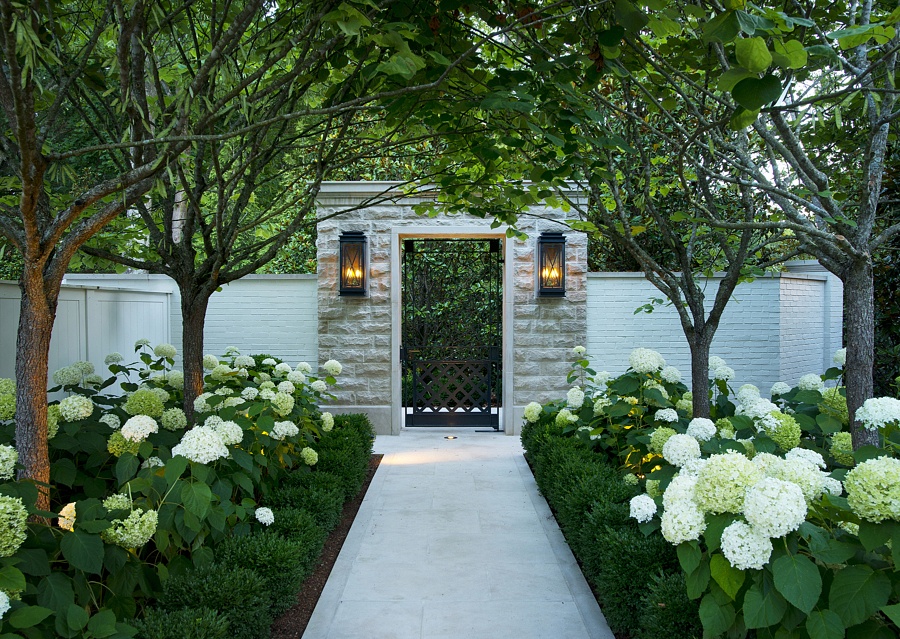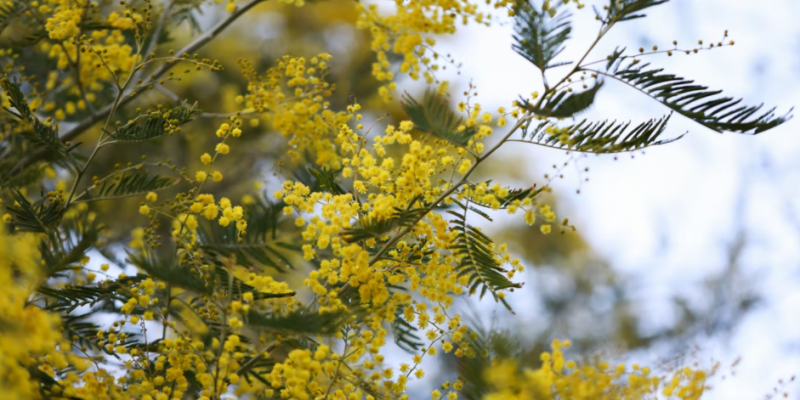A green lawn is a beautiful thing, but as you likely already know by now, it takes way more work than you expect to keep it green!
 Photos Via: Style Blueprint
Photos Via: Style Blueprint
Even if you are watering 1.5 inches every week (in the mornings, so your lawn doesn’t become a mildewed swamp), mowing to the exact height of 2.5 inches (with razor-sharp mowing blades, you might add) and sprinkling nitrogen-rich fertilizer every fall, you still probably aren’t doing enough to guarantee a healthy lawn.
That’s because you aren’t aerating, or ensuring that air is getting to your grass’s crown and roots. If this is the first you’re hearing about lawn aeration, read on for all the info you need to know about this mandatory chore.

What Aeration Does
Grass is a plant, and plants don’t have lungs — so why would your lawn need better access to air? The truth is that even though plants don’t have lungs, they do take in nutrients from the air. Most notably, grass (and all plants) use carbon dioxide and produce oxygen through photosynthesis; in fact, a 25-square-foot lawn creates enough oxygen to support one person for an entire day, and a 50-square-foot lawn can support a family of four. Thus, it is critical that lawns have sufficient exposure to air, so they can take in enough CO2 to grow healthily and emit the oxygen you need to breathe.
However, aeration provides another crucial function: loosening compacted soil. Over time, the dirt around your lawn’s roots becomes tightly compressed, due to constant use (i.e. you and your family walking on the lawn) or things falling onto it, like tree litter and snow. When this happens, your grass’s roots have a harder time growing through the soil, and water, air and other nutrients are less likely to get absorbed. Thus, it is imperative that you aerate your lawn to ensure your grass has space and access to vital components for health.

What Aeration Is
By now you might accept that aeration is important, but that doesn’t get you any closer to performing it properly on your own lawn. First, you need to understand what the process of aeration entails. At its most basic, aeration is poking holes into your lawn. This will give the soil space to expand, which in turn relieves pressure around the roots. Additionally, the holes allow moisture and air to flow into the soil, improving the grass’s health.
You don’t want the holes to be too big; this will damage your lawn and leave unsightly patches of bare dirt. However, you also don’t want the holes to be too small, or else the effort won’t successfully help your lawn. Also, just a few holes won’t do. Experts say that aeration holes should be between 2 and 3 inches deep, .5 to .75 inches in diameter and 2 to 3 inches apart. It is typical to aerate once per year during the active growing season, which falls in late spring and early summer for most lawns. Still, you want the soil to be plenty moist when you aerate, or your job of punching holes and pulling out plugs will be much more difficult.

What Aeration Needs
Larger lawns generally require more expert care because they have a greater chance of developing unsightly problems. When it comes to aeration, larger lawns usually necessitate the use of large and expensive machines, like core aerators, which can seriously damage your lawn if used improperly. Thus, if you do have a larger patch of grass — and if you are uncomfortable using bulky, noisy machinery — you might want to hire professionals to aerate your lawn for you. Since this task only occurs once per year, it isn’t too costly, and it could save you big on repairs to your lawn in the long term.
If you have a small lawn, you can probably aerate yourself using smaller and more manageable tools. Manual aeration tools include things like pitchforks and shoe spikes; these allow you to walk around your lawn and drive holes where you see fit. You can also rent machinery from your local hardware store, but you should real the manual before operation to prevent harm to your lawn or you.
Aeration is one of those tasks that most homeowners don’t talk about, which means you might not have learned about it before you gained a lawn of your own. Fortunately, it isn’t too late to start aerating your lawn and ensuring the lushest, greenest grass in the neighborhood.







